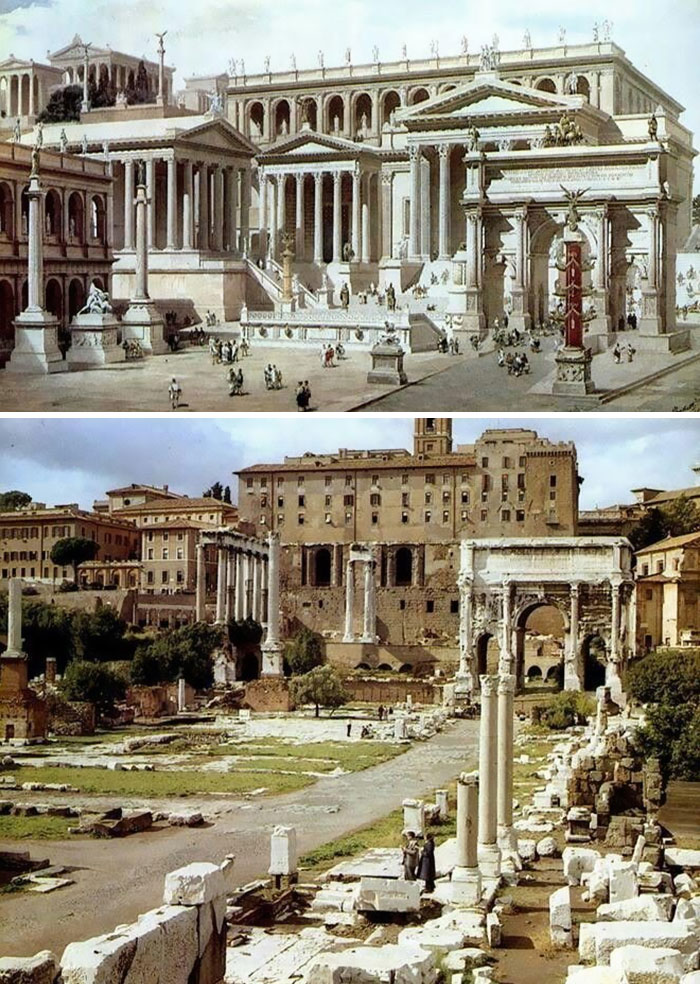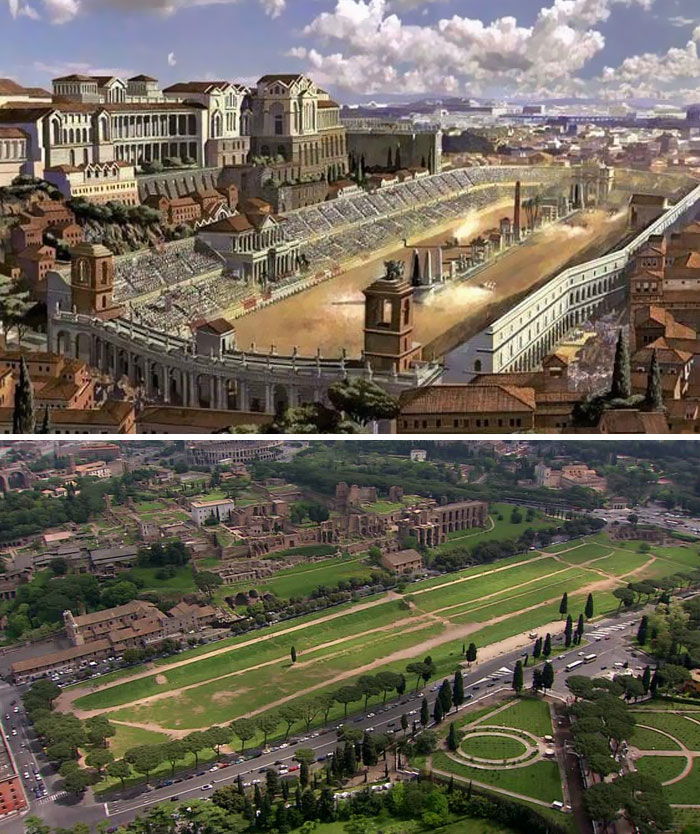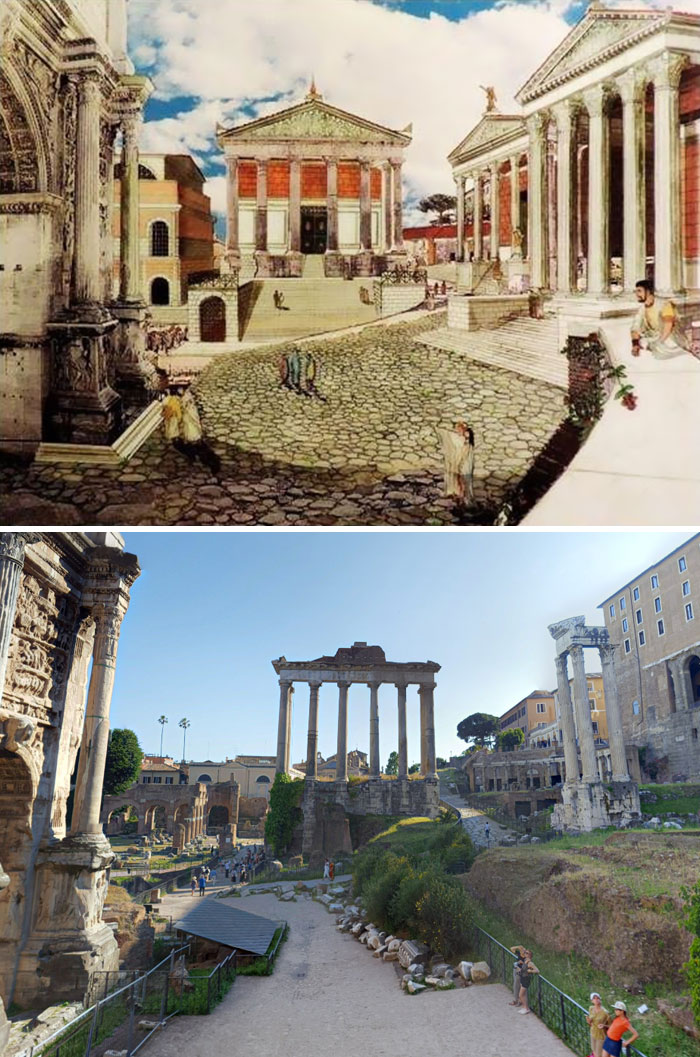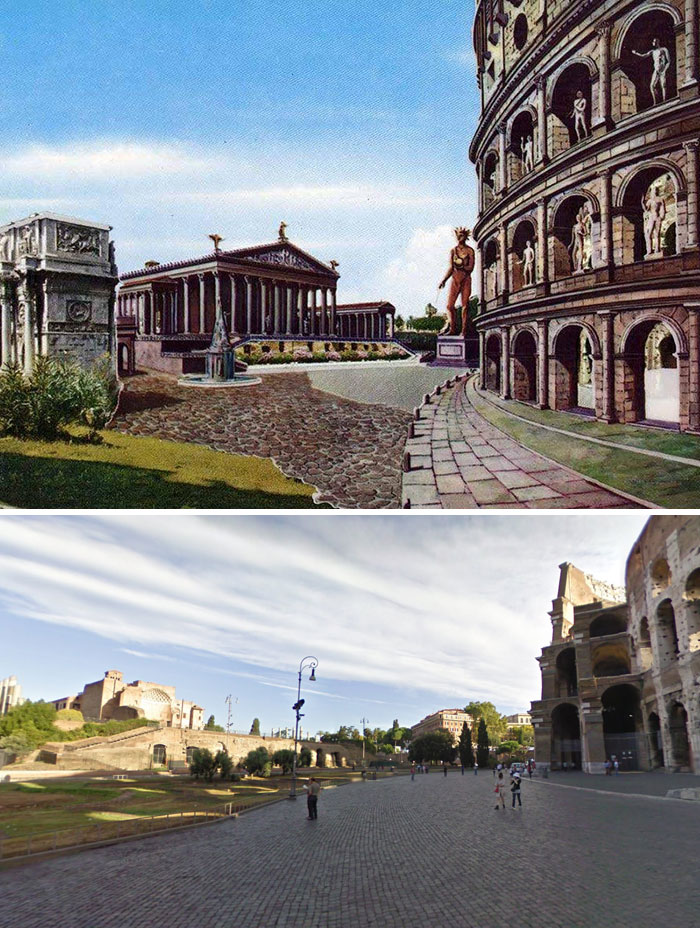Colosseum despite the fact that it stood to see the Empire rise and fall, hundreds of generations and cultures come and go. It always was and will be one of the greatest symbols of the Roman Empire. Yet while we see what is left in our day, it is always fascinating to see what the iconic structures looked like back in their glorious days. So scroll down below and check out these comparisons.
#1
Colosseum

What could be described as Rome’s signature structure, the Colosseum still stands as a breathtaking historical site, despite being around 2000 years old. The amphitheater, back in its glory, could hold an estimated number of 50,000 – 80,000 spectators. And people had a good reason to gather within the premises as the Flavian Amphitheater offered such entertainment as gladiatorial contests, mock sea battles, animal hunts, executions, re-enactments of famous battles, and dramas based on mythology. Nowadays the Coliseum is one of Rome’s most popular tourist attractions, despite being damaged by earthquakes and stone-robbers over time. In 2007, New7Wonders Foundation chose the amazing architecture structure as one of the seven New7Wonders of the World.
#2
Roman Forum

Located at the heart of the city of Rome, the Roman Forum is a a rectangular plaza surrounded by the ruins of several important ancient government buildings and filled with interesting history. At the height of the Empire glory, the site was the venue for public speeches, criminal trials, and gladiatorial matches as well as the commercial hub. In later time, the site was the perfect spot for many artists and architects studying in Rome to sketch during the 17th through the 19th century. Nowadays, the Forum is a tourist attraction showcasing the ruins of some of the most important buildings ancient Rome had.
#3
Circus Maximus

The Circus Maximus was once a chariot-racing stadium and mass entertainment venue. It was the perfect place for ludi, public games held for the benefit and entertainment of the Roman people, which often lined up with various Roman religious festivals. Measuring 621 m (2,037 ft) in length and 118 m (387 ft) in width, it was the first and largest stadium in ancient Rome and the later Empire. It could house an impressive audience of over 150,000 spectators. Thousands of years later, Circus Maximus is now a public park.
#4
Temple Of Saturn

Dedicated to the god Saturn, the Temple was built in 497 BC under Tarquinius Superbus, King of Rome. Suffering various disasters, including fire, the temple was destroyed and rebuilt with the present ruins only reflecting the third incarnation of the Temple of Saturn. There is an inscription on the partially preserved pediment that reads “The Senate and People of Rome restored [the temple] consumed by
#5
Temple Of Venus And Roma

Widely believed to once have been the largest temple in Ancient Rome, the Temple of Venus and Roma is located on the Velian Hill, right next to the Colosseum. Constructed in 135 AD, the temple was dedicated to the goddesses Venus Felix (“Venus the Bringer of Good Fortune”) and Roma Aeterna (“Eternal Rome”). It is believed that a severe earthquake in the 9th century destroyed the temple. Later, a church was built in its place, ordered by Pope Leo IV. Only a few columns of the old temple remain standing today.
#6
Temple Of Castor And Pollux And Temple Of Caesar



